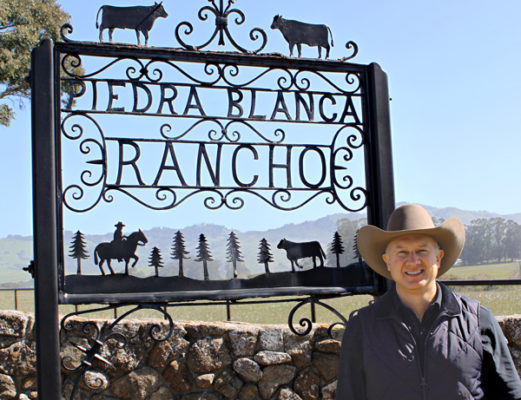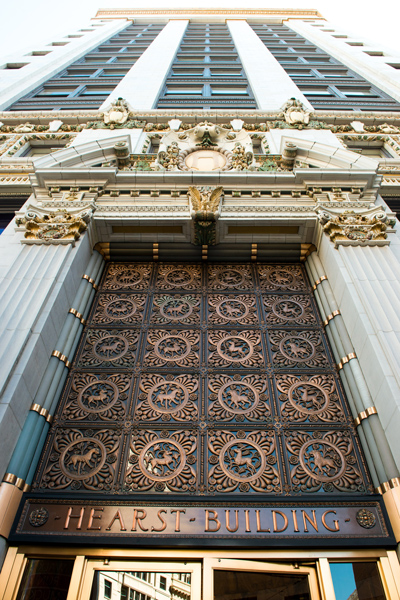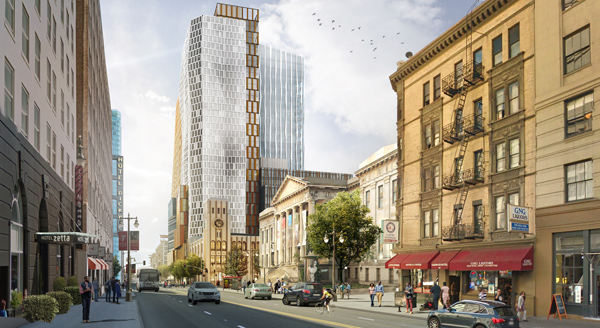From San Francisco to Los Angeles, Hearst Corporation properties—broad tracts of ranch land and gorgeous turn-of-the-century buildings—have been foundational to the region’s evolution. It is the job of Marty Cepkauskas, senior director of real estate, western properties division for Hearst, to honor that history while making sound business decisions.
Cepkauskas manages real estate for over 225,000 acres of California ranching and timber land as well as more than 500,000 square feet of commercial real estate. He started at Hearst with facilities at the SF Chronicle and Examiner, getting his feet wet in the core media business and, in 1999, shifted to work with Hearst real estate. “Many of these properties come with historic legacy and, thus, special goals in asset management.” Cepkauskas says, “We are not developers, but rather, we are the stewards of these properties.” He knows that Hearst has a profound understanding of the places and relationships with people who can help formulate and enact decisions around maintaining the properties.

The central question for Cepkauskas, his team, and executive leadership (including Steve Hearst, great-grandson of William Randolph) is how these properties should function in the current climate. When presenting and then implementing projects, Cepkauskas looks at much more than earnings. The complex goals of sustaining the properties while also leveraging business decisions that increase cash flow proves fertile ground for innovation.
Several exciting projects are underway. As part of the 82,000-acre San Simeon Ranch originally purchased in 1865, Hearst owns 18 miles of stunning California coastline. Focused on preserving the land, instead of developing it, they put the land in an agricultural conservation easement to preserve the coastline and ranchland.
“It would be easy to just sell property or just maintain them, but these are really exciting properties that you want to do right by.”
In another inventive bid to sustain the cattle business, Cepkauskas stumbled across a newspaper article (yes, a Hearst-owned paper) that designated sections of their Jack Ranch property as an excellent site for solar energy production: sun, an existing high-voltage line, flat land, and no environmental sensitivity. With go-ahead from leadership, he developed partnerships with solar power developers to build the Cal Flats solar field, which is now controlled by Capital Dynamics. When the project goes fully live at the end of 2018, it will produce enough energy to power 100,000 homes. California’s power company, PG&E, and Apple will purchase the energy. Once again, Hearst had other options, but Cepkauskas leveraged partnerships to enact methods for maintaining the integrity of the land.

Innovative response does not end with the large tracts of cattle pasture. Cepkauskas also brings new vision to historic buildings. After more than a century in operation, the Hearst Building in downtown San Francisco needs some updates. Assessing the building’s best uses, the obvious answer was a creative tech work space. However, this 108-year-old building comes with smaller floor plates than newer buildings. The layout, Cepkauskas realized, aligns with boutique hotels. The location, next to the busy Moscone Convention Center, could not be better. Forming a partnership with JMA Ventures, a company well versed in the hotel industry, the Hearst Building is about to undergo over 70 million dollars in upgrades. Hearst will retain ownership and offices, and the building, slated to reopen in 2021, will have a new life in the changing community of downtown San Francisco.
In downtown LA, the 1913, breath-taking Herald Examiner building, designed by Julia Morgan and shuttered in the 1980s, is also undergoing massive change. Hearst sold two adjoining lots to Forest City Realty Trust to develop over 600 apartment units. Meanwhile The Georgetown Company, a joint venture LLC, will transform the Examiner building into office space with ground floor retail. The plans are approved, construction starts in 2018, and restaurateurs of the famed Republique are already lined up as tenants.
In 2008, Cepkauskas started on the most difficult part of a project: gaining regulatory approval. Eight years later, Hearst and Forest City are ready to break ground on the four-acre, 1.7-million-square-foot San Francisco 5M Project. Among other things, two Forest City-owned towers of office and housing space will push up into the San Francisco skyline and flank the iconic Hearst-owned Chronicle building. Hearst retains rights to develop 400 condo units, but they won’t do it right away. The company is willing to await the right time for transitions. “We are more organic; we don’t have to make decisions based on tight financial bottom lines and constraints,” Cepkauskas says.

These properties have withstood time, earthquakes, and economic shifts. They will now survive new business models and, it seems, flourish because of these changes. By balancing history and business and finding great partners for the properties, Cepkauskas and his division ensure that Hearst will, once again, transform the urban and rural landscape of California. “It would be easy to just sell property or just maintain them, but these are really exciting properties that you want to do right by,” he says.
A MESSAGE FROM MURPHY AUSTIN ADAMS SCHOENFELD LLP
MURPHY AUSTIN congratulates Marty Cepkauskas on his recognition by American Builders Quarterly and salutes the Hearst Corporation for its commitment to beautifying and preserving California’s coastal rangeland and pastures. Murphy Austin attorneys place the highest value on meaningful client relationships and helping businesses achieve their goals. Visit us at murphyaustin.com.
Ackman-Ziff Real Estate Group (“AZ”) is the industry’s preeminent boutique real estate capital advisory firm. AZ offers a wide variety of cutting-edge commercial real estate capital markets financing solutions, including debt and mezzanine financing, preferred and joint venture equity, sponsor equity, and investment sales.


